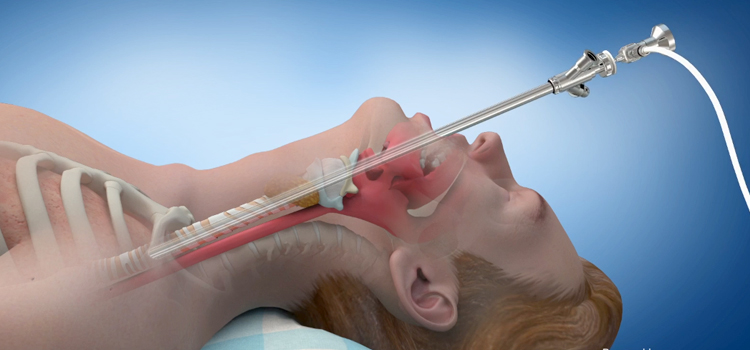
Bronchoscopy is a procedure to look directly at the airways in the lungs using a thin, lighted tube (bronchoscope). The bronchoscope is put in the nose or mouth. It is moved down the throat and windpipe (trachea), and into the airways. A healthcare provider can then see the voice box (larynx), trachea, large airways to the lungs (bronchi), and smaller branches of the bronchi (bronchioles).
There are 2 types of bronchoscope: flexible and rigid. Both types come in different widths.
A rigid bronchoscope is a straight tube. It’s only used to view the larger airways. It may be used within the bronchi to:
A flexible bronchoscope is used more often. Unlike the rigid scope, it can be moved down into the smaller airways (bronchioles). The flexible bronchoscope may be used to:
A bronchoscopy may be done to diagnose and treat lung problems such as:
Diagnostic procedures or treatments that are done with bronchoscopy include:
Your healthcare provider may also have other reasons to advise a bronchoscopy.
In most cases, the flexible bronchoscope is used, not the rigid bronchoscope. This is because the flexible type has less risk of damaging the tissue. People can also handle the flexible type better. And it provides better access to smaller areas of the lung tissue.
All procedures have some risks. The risks of this procedure may include:
Your risks may vary depending on your general health and other factors. Ask your healthcare provider which risks apply most to you. Talk about any concerns you have.
In some cases, a person may not be able to have a bronchoscopy. Reasons for this can include:
If you have high levels of carbon dioxide in the blood (hypercapnia) or severe shortness of breath, you may need to be on a breathing machine before the procedure. This is done so oxygen can be sent right into your lungs while the bronchoscope is in place.